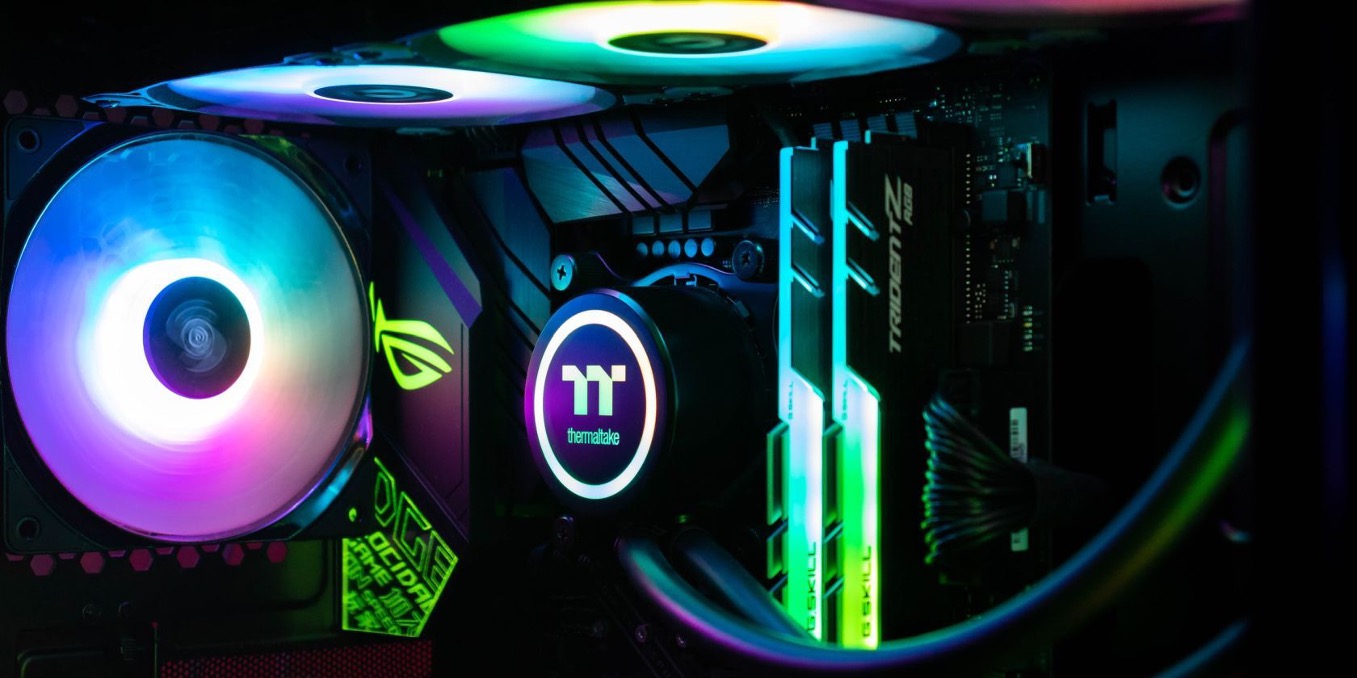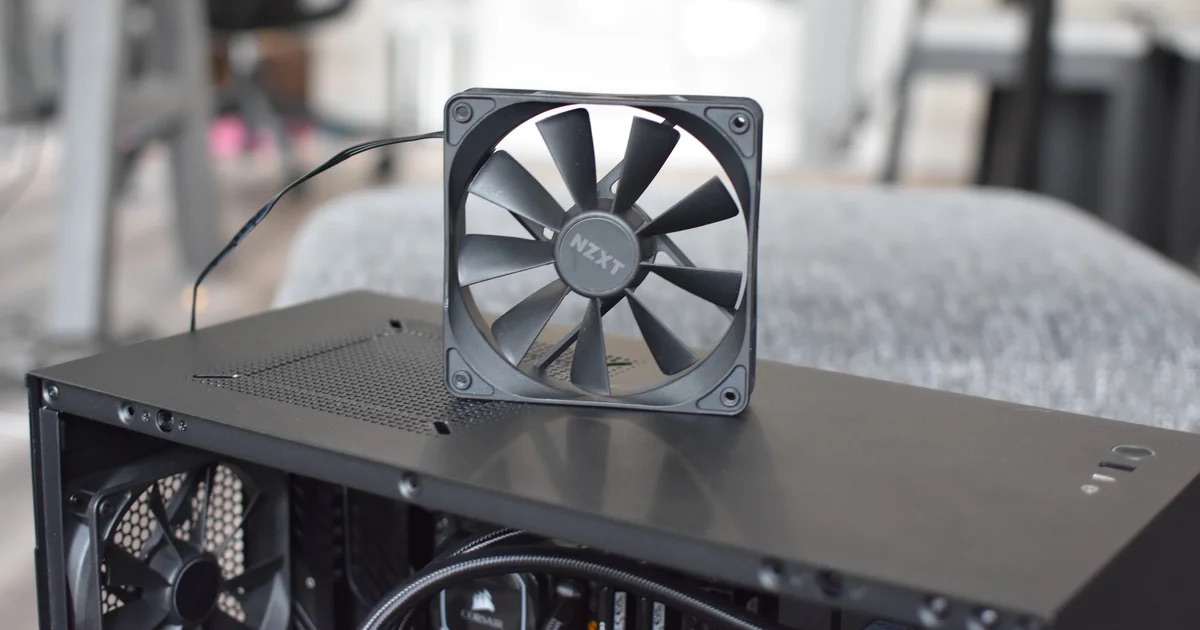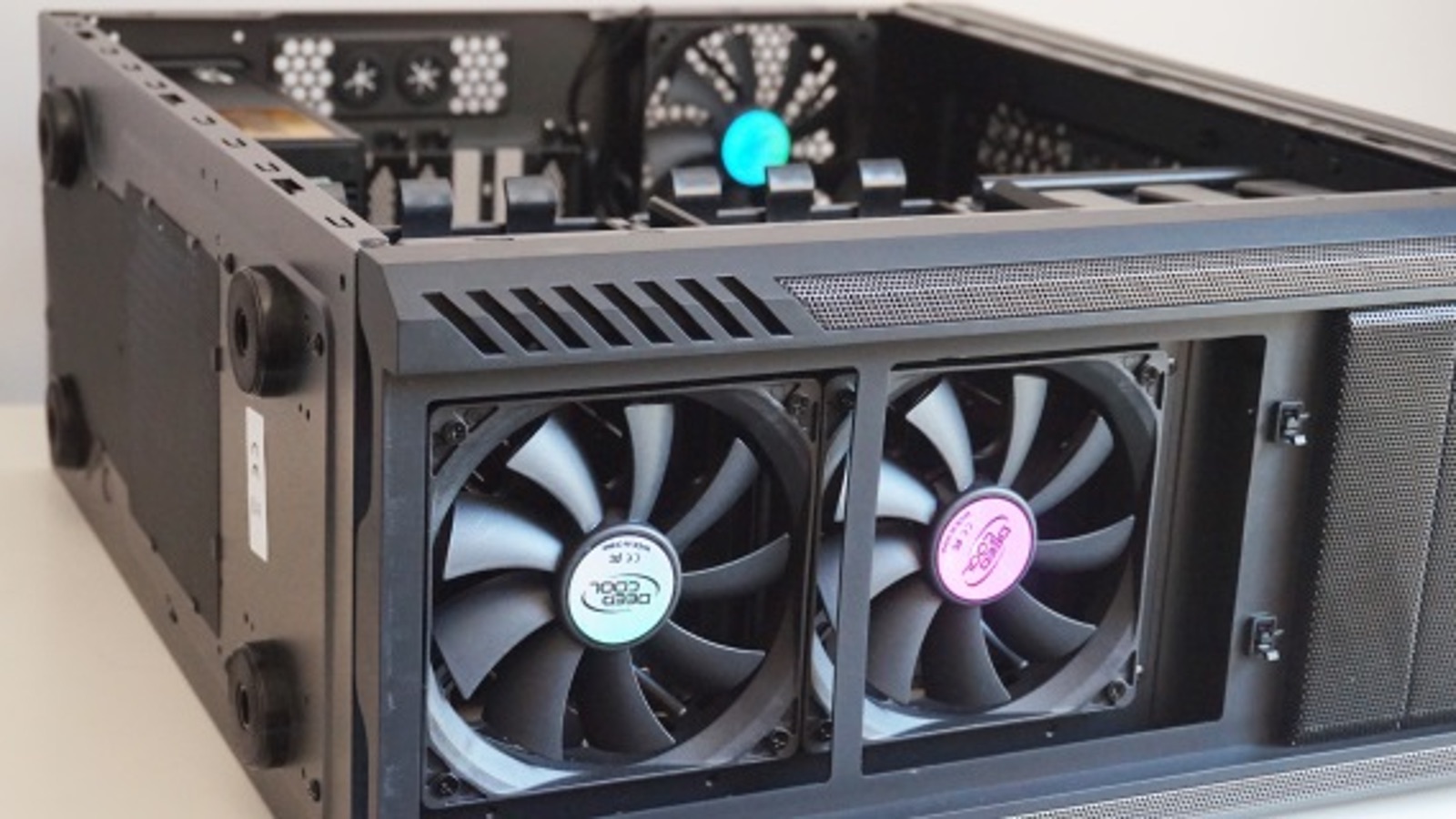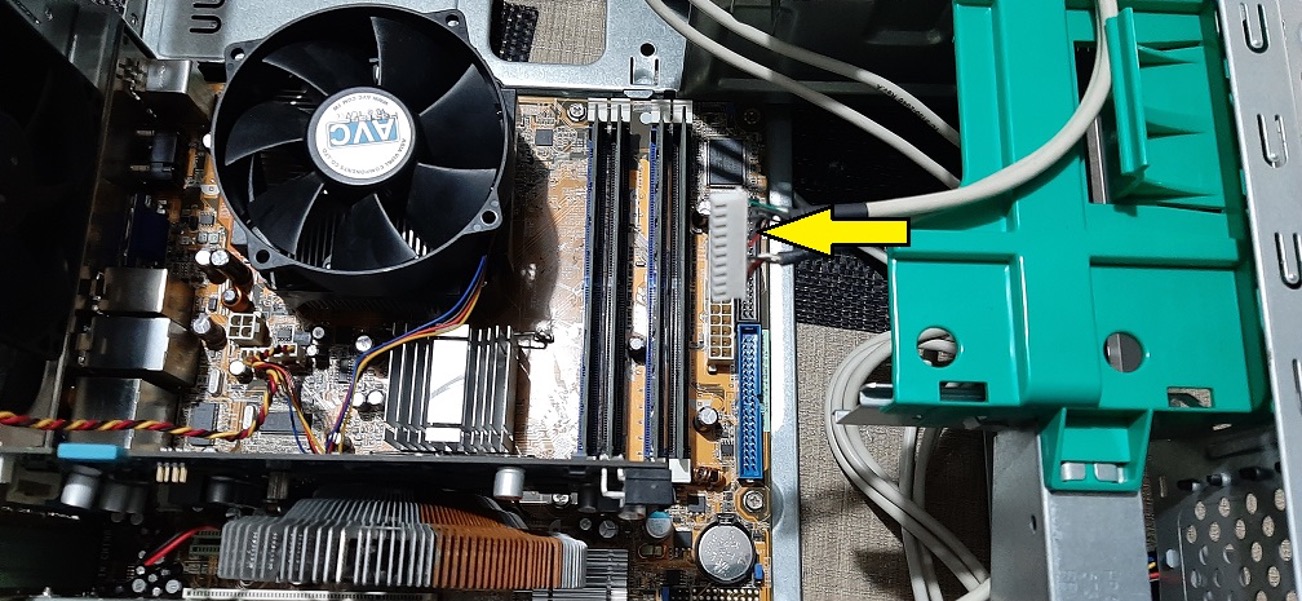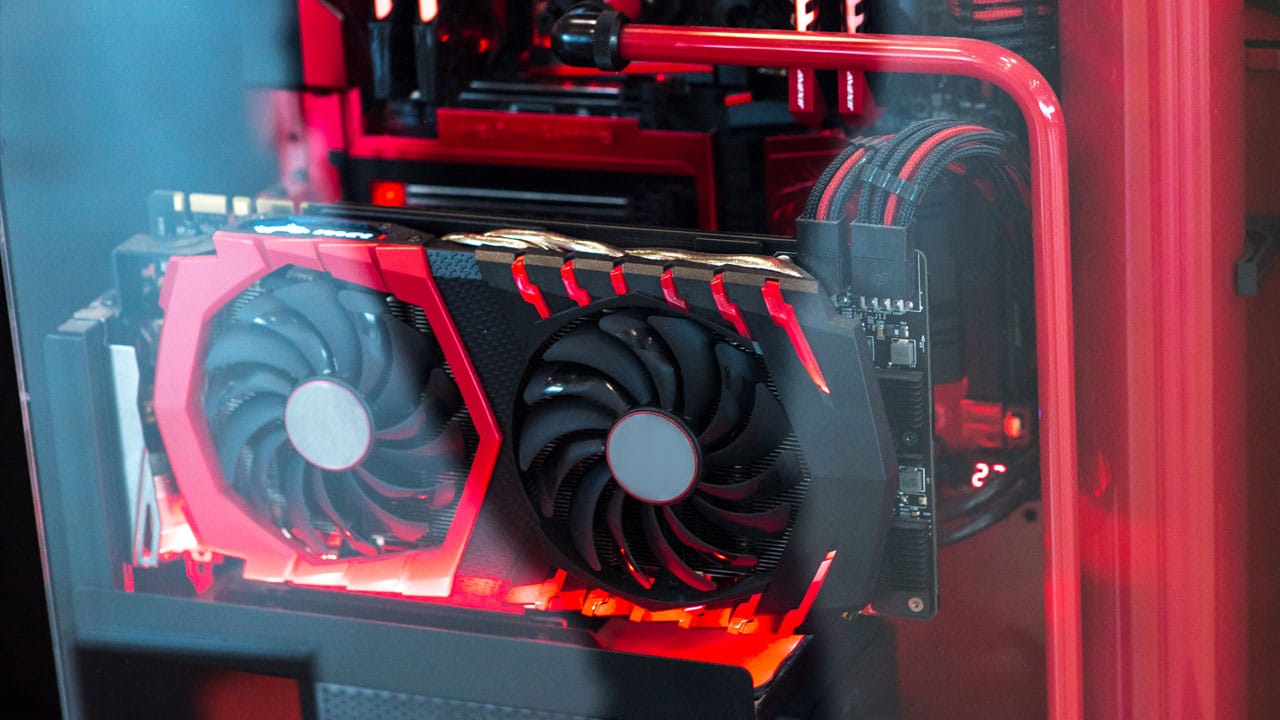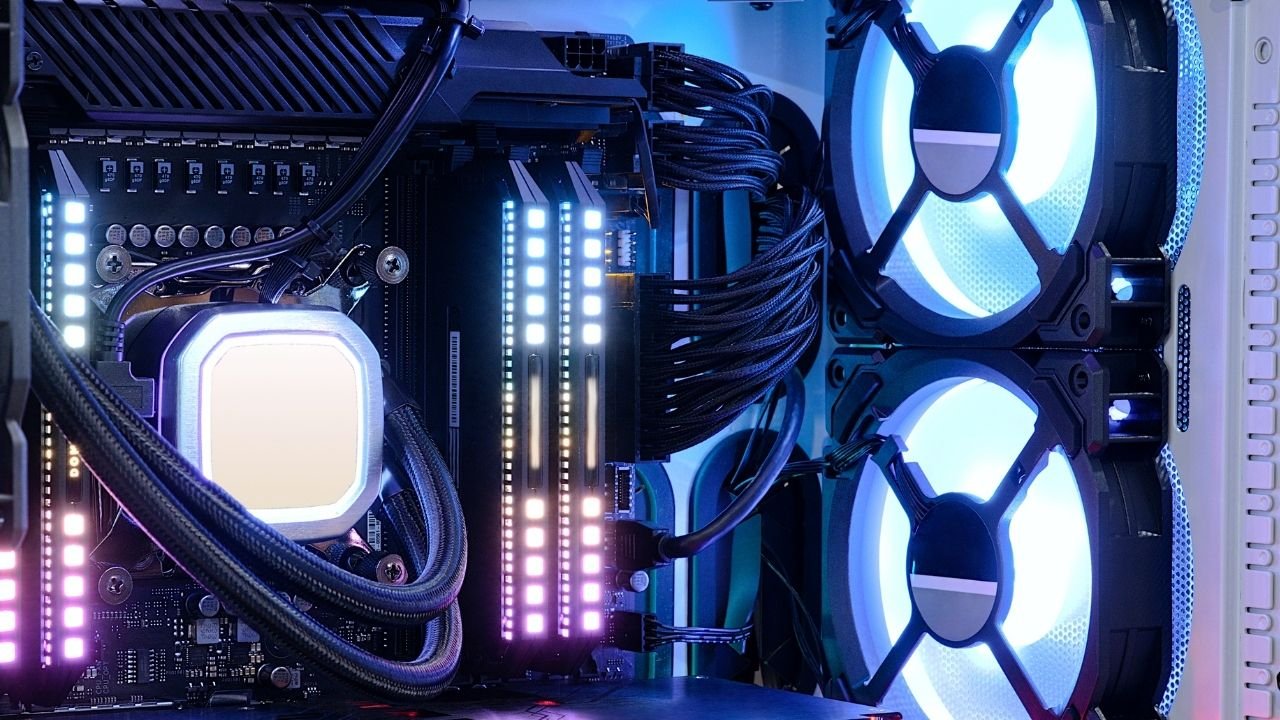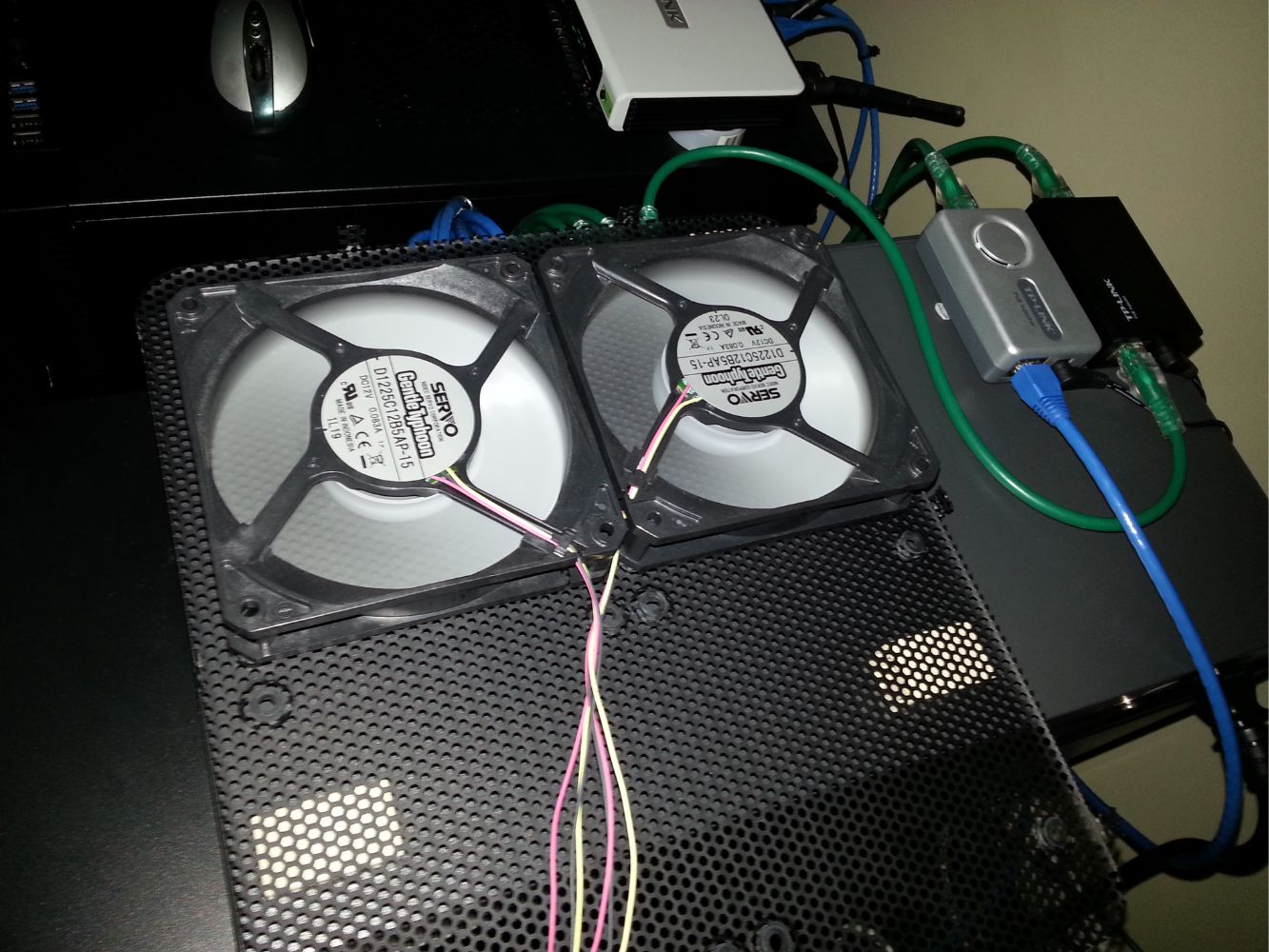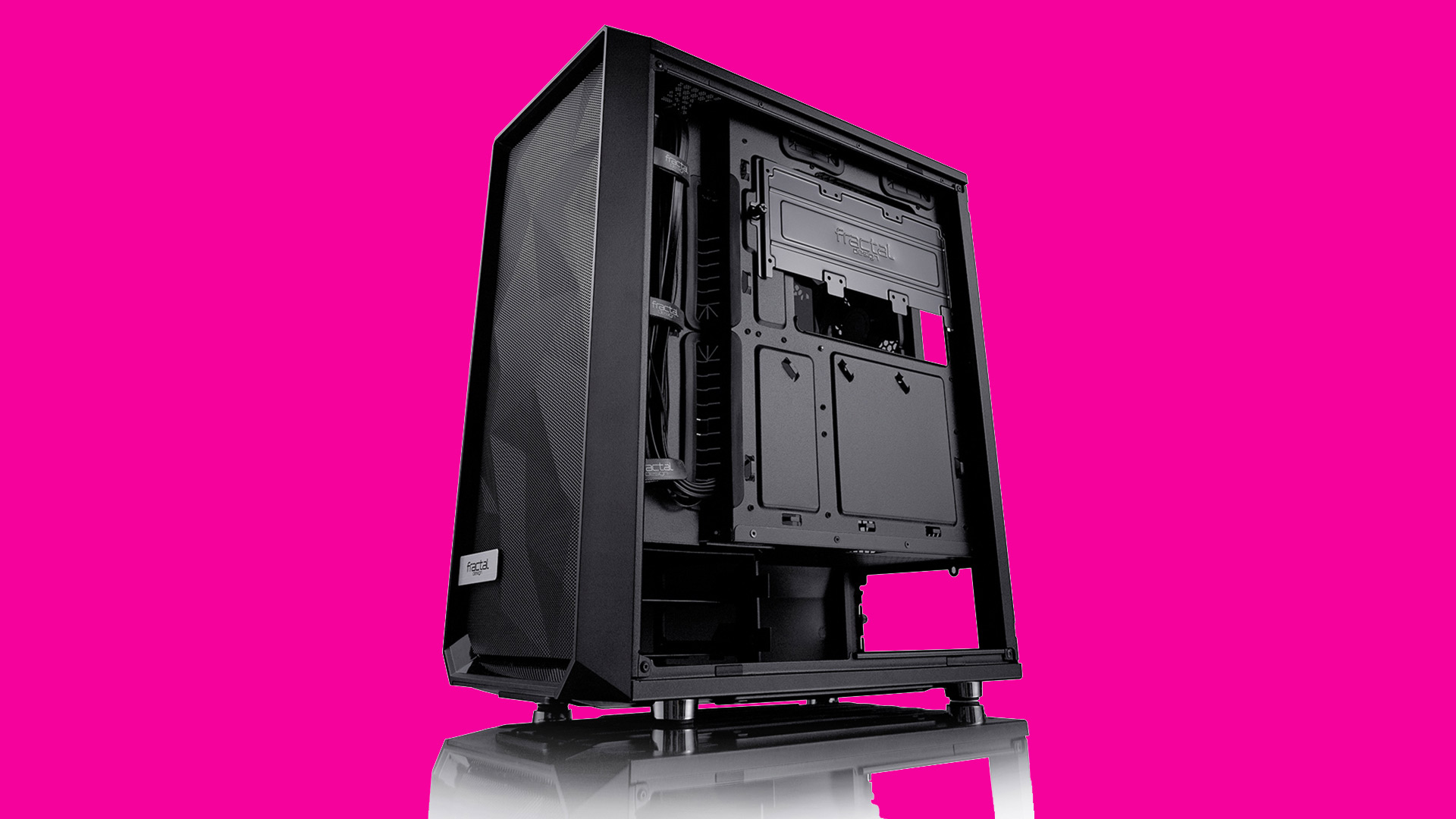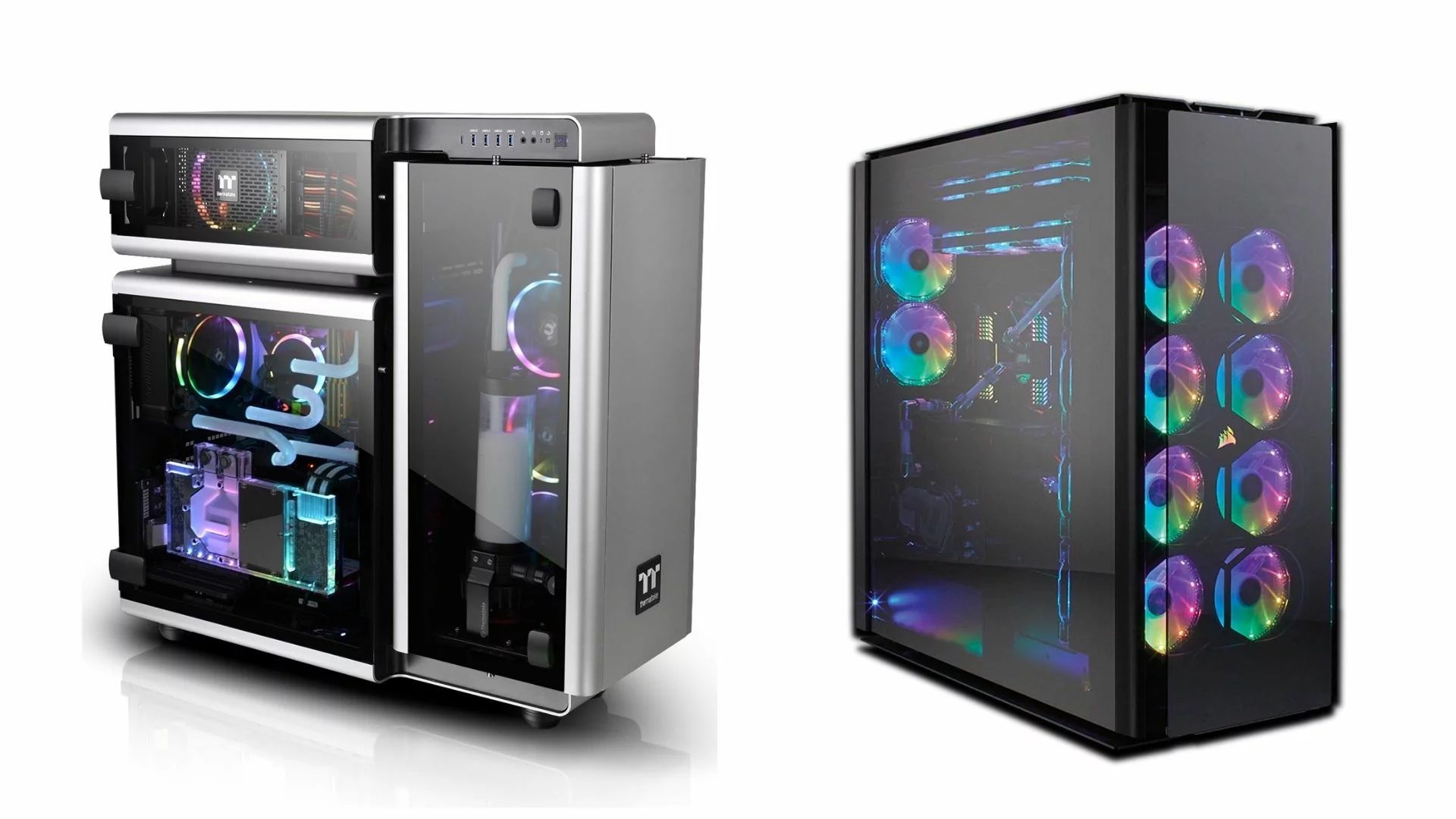Introduction
When it comes to building a PC, one component that often gets overlooked is the case fan. While it may seem like a small and insignificant part, the PC case fan plays a crucial role in maintaining the overall temperature and airflow within your computer system. Choosing the right PC case fan can make a significant difference in keeping your system cool, preventing overheating, and ensuring optimal performance.
With a wide range of options available in the market, selecting the perfect PC case fan can be a daunting task. There are several factors to consider, such as the size of the fan, airflow capacity, noise level, bearing type, control options, RGB lighting, fan orientation, and additional features. Each of these factors plays a vital role in determining the performance and efficiency of the fan.
In this article, we will delve into the essential factors to consider when choosing a PC case fan. Understanding these factors will help you make an informed decision and select a fan that best suits your needs and preferences. So, without further ado, let’s dive into the world of PC case fans and explore how to choose the perfect one for your system.
Factors to Consider When Choosing a PC Case Fan
When it comes to choosing a PC case fan, there are several important factors to take into consideration. These factors will determine the fan’s performance, noise levels, and compatibility with your system. Let’s explore each of these factors in detail:
- Size of the Fan: PC case fans come in various sizes, including 120mm, 140mm, and 200mm. The size of the fan will depend on the available space in your computer case. Larger fans can move more air at lower speeds, resulting in quieter operation and better cooling performance.
- Airflow Capacity: The airflow capacity, measured in cubic feet per minute (CFM), determines how much air the fan can move. Higher CFM ratings indicate better cooling performance. Consider the airflow requirements of your system and choose a fan with an appropriate CFM rating to ensure proper ventilation.
- Noise Level: The noise level of a PC case fan is measured in decibels (dB). Quiet operation is essential, especially if you want to build a silent or low-noise PC. Look for fans with lower dB ratings or those that feature noise-reducing technologies like rubber padding or aerodynamic designs.
- Bearing Type: PC case fans typically use one of three bearing types: sleeve, ball, or fluid. Sleeve bearings are economical but have shorter lifespans. Ball bearings are more durable and long-lasting but can be noisier. Fluid bearings offer a balance between durability and noise levels.
- PWM or DC Control: Fans can be controlled using either pulse width modulation (PWM) or direct current (DC). PWM fans allow for more precise control of fan speed and can adjust according to temperature changes. DC fans run at a fixed speed and are generally more affordable.
- RGB Lighting: If you want to add a touch of personalization to your PC, consider fans with RGB lighting. These fans feature customizable lighting effects that can sync with other RGB components in your system, creating a visually stunning setup.
- Fan Orientation and Mounting Options: Depending on your computer case layout, consider the orientation and mounting options of the fan. Some cases support both intake and exhaust configurations, while others may have specific mounting locations for fans.
- Additional Features and Accessories: Some PC case fans come with additional features like dust filters, anti-vibration pads, or modular cables. These features can enhance the fan’s performance, ease of installation, and maintenance.
By carefully considering these factors, you can choose a PC case fan that aligns with your specific requirements, ensuring optimal cooling efficiency, lower noise levels, and long-term durability.
Size of the Fan
The size of the fan is an important factor to consider when choosing a PC case fan. It determines not only the fan’s compatibility with your computer case but also its cooling capacity and noise levels. PC case fans generally come in three main sizes: 120mm, 140mm, and 200mm.
Smaller fans, such as 120mm, are commonly used in most computer cases and offer a good balance between airflow and size. They are versatile and fit well in both small and mid-sized cases. Additionally, they are often more affordable compared to larger fans.
On the other hand, larger fans, like the 140mm or 200mm variants, can provide better cooling performance due to their ability to move more air at lower RPMs. This can result in quieter operation as the fan doesn’t need to spin as fast to achieve the same airflow. However, it’s important to note that larger fans may not fit in all computer cases, so it’s crucial to consider the available space and fan mounting locations in your case.
It’s worth mentioning that some computer cases support multiple fan sizes, allowing you to mix and match different sizes for optimal cooling. This can be especially beneficial if you have specific cooling requirements for certain components, such as a dedicated CPU cooler or GPU.
In general, when choosing the size of the fan, it’s recommended to opt for the largest size that can comfortably fit in your computer case. A larger fan will usually provide better airflow and cooling performance, resulting in lower overall system temperatures. However, if space limitations are a concern, smaller fans can still offer adequate cooling for most systems.
Remember to carefully measure the available space and check the fan mounting options in your computer case before purchasing a fan. Additionally, consider the overall layout and airflow design of your system to determine the best combination of fan sizes for optimal cooling efficiency.
Airflow Capacity
When choosing a PC case fan, the airflow capacity is a critical factor to consider. The airflow capacity, measured in cubic feet per minute (CFM), indicates how much air the fan can move in a given time. A higher CFM rating generally suggests better cooling performance.
The airflow capacity of a fan directly affects the ventilation and cooling efficiency of your computer system. It helps to remove hot air generated by components like the CPU, GPU, and power supply, and replace it with cooler air from the surroundings. Adequate airflow prevents heat buildup and ensures the longevity and optimal performance of your PC’s internal components.
The CFM rating required for your system depends on its components and the level of heat they generate. For example, high-end gaming systems or systems with overclocked CPUs tend to produce more heat and may require fans with higher CFM ratings to maintain optimal temperatures.
It’s important to note that a higher CFM rating often comes with an associated increase in fan noise. Fans with high airflow can produce more audible noise due to the greater volume of air they are moving. If noise levels are a concern for you, consider finding a fan that strikes a balance between airflow capacity and noise output.
In addition to the overall airflow capacity, you should also consider the fan’s static pressure. Static pressure is the measure of the force with which the fan can push or pull air through obstructions, such as heatsinks or dust filters. Fans with higher static pressure are better suited for cases with restrictive airflow paths or components with dense fin stacks, as they can effectively push air through these obstacles.
When choosing a fan based on airflow capacity, it’s recommended to evaluate the CFM rating in conjunction with the noise level and static pressure. Look for fans that offer a balance between adequate airflow, manageable noise levels, and sufficient static pressure to suit your system’s cooling demands.
Noise Level
The noise level of a PC case fan is a crucial consideration, especially if you value a quiet computing experience. The noise level is measured in decibels (dB) and indicates the fan’s sound output. Lower dB ratings equate to quieter operation.
Noise from PC case fans is primarily attributed to the movement of air and the rotation of fan blades. As fan speed increases, so does the noise level. Therefore, it’s essential to strike a balance between fan speed and noise output to ensure a quieter system without compromising on cooling performance.
Many manufacturers provide noise level specifications for their fans, usually measured at maximum speed. However, it’s important to note that most users won’t be running their fans at maximum speed due to the resulting noise levels. Therefore, it’s often more practical to look for fans that offer a good balance between performance and noise at lower speeds.
Several factors contribute to reducing fan noise. One such factor is the type of bearing used. Fluid or magnetic bearings are generally quieter compared to sleeve or ball bearings. Additionally, the design of the fan blades can affect noise output. Fans with optimized blade designs, such as those with aerofoil-shaped blades or serrated edges, tend to produce less noise while maintaining efficient airflow.
Noise-reducing features such as rubber padding or anti-vibration mounts can also help minimize noise transmission from the fan to the rest of the case, reducing overall system noise.
It’s important to consider that the noise level of a fan can vary depending on its operating speed. PWM (pulse width modulation) fans allow for more precise control of fan speed and can adjust according to temperature changes, which can help maintain a balance between cooling performance and noise output. On the other hand, DC (direct current) fans run at a fixed speed and may have limited speed control options.
When choosing a PC case fan, pay attention to the manufacturer’s noise specifications, as well as user reviews and feedback. Real-world experiences from other users can provide valuable insight into the actual noise output and help you make an informed decision based on your noise tolerance preferences.
Bearing Type
The bearing type of a PC case fan is an important factor to consider as it directly affects the fan’s lifespan, noise levels, and overall performance. There are several types of bearings commonly used in PC case fans, including sleeve, ball, and fluid bearings.
Sleeve bearings are the most common and economical option. They consist of a sleeve or sleeve-shaped bearing that supports the fan shaft. Sleeve bearings offer decent performance and are generally quiet during initial use. However, over time, the lubricant inside the sleeve can dry up, leading to increased friction and potentially causing the fan to become noisy. Sleeve bearings also have a shorter lifespan compared to other bearing types.
Ball bearings, on the other hand, are more durable and long-lasting. They contain small metal balls that reduce friction and ensure smooth rotation of the fan shaft. Ball bearings are suitable for systems that require continuous and demanding operation, such as servers or high-performance gaming rigs. However, they tend to produce more noise compared to sleeve bearings.
Fluid bearings offer a balance between durability and noise levels. They use a thin layer of lubricating fluid to support the fan shaft, resulting in smooth and quiet operation. Fluid bearings are known for their longer lifespan and are often used in high-quality, higher-end fans. While they may be slightly more expensive, they provide reliable performance and reduced noise levels.
When choosing a PC case fan based on bearing type, it’s crucial to consider your priorities. If noise levels are a primary concern, fans with fluid or ball bearings may be a better choice. If you’re on a budget, sleeve bearings can still provide adequate performance at a lower cost. However, it’s important to note that sleeve bearings may require replacement or maintenance after a certain period.
In addition to the bearing type, it’s worth considering the quality and reputation of the fan manufacturer. Reputable manufacturers often use higher-quality bearings, resulting in better overall performance and longer lifespan. Reading product reviews and user experiences can also provide valuable insights into the reliability and noise levels of specific fan models.
Ultimately, choosing the right bearing type depends on your specific needs, budget, and preferences for noise levels and longevity. Consider these factors carefully to ensure that you select a fan that meets your requirements and provides reliable performance for your PC system.
PWM or DC Control
When choosing a PC case fan, one of the important considerations is the type of control it offers – whether it is PWM (pulse width modulation) or DC (direct current). This control method determines how the fan’s speed is regulated and can have a significant impact on noise levels, power consumption, and cooling performance.
PWM fans are the more advanced option. These fans have a four-pin connector that enables dynamic speed control based on the pulse width modulation signal coming from the motherboard or fan controller. The fan speed is adjusted by varying the pulse width of the signal. PWM fans offer greater flexibility and precision in controlling fan speeds, as they can adjust the RPM (revolutions per minute) depending on the system’s temperature requirements. This enables them to operate at lower speeds and produce less noise when cooling demands are low, and automatically ramp up when the system gets hotter.
On the other hand, DC fans have a three-pin connector and operate at a fixed speed determined by the voltage supplied by the motherboard or fan controller. DC fans generally have a simpler control mechanism and are often less expensive than PWM fans. However, their speed remains constant, which means they may run at full speed even when cooling demands are low, resulting in higher noise levels. DC fans are typically set to a speed that balances between effective cooling and acceptable noise levels under normal operating conditions.
When deciding between PWM and DC fans, consider your requirements and priorities. PWM fans are more suitable for users who value precise control over fan speeds, quieter operation during idle or low-temperature periods, and energy efficiency. They are especially beneficial for systems that require adaptive cooling based on varying workloads or temperature changes. DC fans, on the other hand, are a suitable choice if you have a fixed cooling requirement, are looking for a more cost-effective solution, or prefer simplicity in fan control.
It’s important to ensure that your motherboard or fan controller supports the control method you choose. Most modern motherboards feature headers that can accommodate both PWM and DC fans. However, it’s advisable to check the specifications or consult the manufacturer’s documentation to ensure compatibility.
Ultimately, the decision between PWM and DC control will depend on your specific needs, budget, and desired level of control and flexibility over fan speeds. Consider these factors carefully to select the control method that best suits your requirements and contributes to optimal cooling performance in your PC system.
RGB Lighting
RGB lighting has become increasingly popular in PC builds as it allows for customization and adds a visually appealing element. When choosing a PC case fan, the option of RGB lighting can enhance the aesthetic appeal of your system. RGB fans feature built-in LEDs that can display a wide range of colors and lighting effects.
With RGB lighting, you can personalize your PC by selecting colors that match your theme or preferences. Whether you want a vibrant and eye-catching display or a subtle lighting effect, RGB fans offer flexibility in creating the desired ambiance.
Many RGB fans come with software or hardware controllers that allow you to customize the colors, lighting effects, and even synchronize them with other RGB components in your system. This synchronization enhances the overall visual impact of your PC, creating a harmonious and coordinated lighting setup. Some fans even support popular RGB lighting ecosystems like ASUS Aura Sync, MSI Mystic Light, or Corsair iCUE, enabling seamless integration with other RGB-enabled components.
It’s important to note that RGB fans may come at a higher price point compared to non-RGB options. So, consider your budget and whether the aesthetics and customization options provided by RGB lighting justify the additional cost for your build.
Additionally, pay attention to the quality and brightness of the RGB lighting. Look for fans that provide vibrant and consistent lighting without any color discrepancies or dimming issues. Some high-end fans may even offer addressable RGB lighting, where individual LEDs on the fan can be controlled independently, allowing for more intricate lighting effects.
Don’t forget to consider the impact of RGB lighting on your system’s overall performance. While RGB fans do consume additional power, the impact on overall performance is minimal. However, if you have a highly power-constrained build, it’s worth considering the power consumption of your RGB fans in conjunction with other components in your system.
RGB lighting is a subjective feature, and its value depends on your personal preferences and the overall look you want to achieve for your PC. If you prioritize customization, uniqueness, and a visually stunning setup, RGB fans can be an excellent choice to take your PC aesthetics to the next level.
Fan Orientation and Mounting Options
When choosing a PC case fan, it’s crucial to consider the fan’s orientation and the available mounting options in your computer case. This ensures optimal airflow and efficient cooling throughout your system.
Fan orientation refers to the direction in which the fan blows air. In most cases, fans can be installed as intake or exhaust fans. Intake fans draw cool air into the case, while exhaust fans expel hot air from the case. Establishing a proper balance between intake and exhaust fans is important for maintaining positive air pressure, minimizing dust accumulation, and maximizing cooling efficiency.
Mounting options vary depending on the design and layout of your computer case. Some cases have dedicated fan mounting locations, while others may offer flexibility in fan placement through mounting brackets or removable drive cages. It’s important to consult your case’s documentation or specifications to determine the available mounting options and the number of fans it can accommodate.
Consider the following tips for fan orientation and mounting:
- Intake and Exhaust: In a typical setup, it’s advisable to have intake fans at the front or bottom of the case, drawing cool air into the system. Exhaust fans should be placed at the rear or top of the case, expelling hot air. This configuration promotes efficient airflow from front to back, effectively cooling components.
- Balancing Airflow: Aim to maintain a balanced airflow by having an equal number of intake and exhaust fans or slightly more intake fans to create positive air pressure. This helps to prevent dust buildup by forcing the air out through gaps and filters, reducing the amount of dust entering the case.
- Additional Case Fans: Consider adding extra fans to strategic locations if your case supports them. For example, installing a side panel fan can provide direct airflow to the graphics card, assisting in cooling during heavy gaming sessions.
- Fan Size and Compatibility: Ensure that the fan sizes you choose are compatible with the available mounting locations in your case. Smaller cases might have limitations on fan size, while larger cases often offer more flexibility in terms of mounting options.
- Airflow Obstacles: Take into account any potential airflow obstacles, such as drive cages, components with large heatsinks, or cable management. Adjust fan placement or select fans with higher static pressure to overcome these obstacles and maintain adequate airflow.
- Dust Filters and Cleaning: When installing intake fans, check if your case has dust filters in place to minimize dust accumulation. Regularly clean the filters and fans to ensure optimal airflow and prevent overheating caused by dust buildup.
By paying attention to the fan orientation and mounting options, you can create a well-ventilated and efficiently cooled system, contributing to the overall stability and performance of your PC.
Additional Features and Accessories
When choosing a PC case fan, it’s worth considering additional features and accessories that can enhance performance, ease of installation, and maintenance. These features can vary depending on the fan model and manufacturer, so it’s important to evaluate them based on your specific needs and preferences.
Here are some additional features and accessories to consider:
- Dust Filters: Some fans come with built-in dust filters or are compatible with removable filters that help minimize dust accumulation inside the case. Dust filters prevent dust particles from entering the system, reducing the risk of clogged heatsinks and fans, and improving overall system cleanliness.
- Anti-vibration Pads and Mounts: Fans equipped with anti-vibration pads or mounts help dampen vibrations and minimize noise transmission to the case. This feature can contribute to a quieter computing experience by reducing the potential rattling or humming noises caused by fan vibrations.
- Modular Cables: Fans with modular cables allow for easier cable management within the case. Detachable cables enable a cleaner and more organized setup by reducing cable clutter and improving airflow.
- Fan Controllers: Some fans come with integrated fan controllers that allow you to adjust the fan speed manually. These controllers can be handy if you prefer manual control over fan speeds or if your motherboard has limited fan headers.
- Vibration Isolators: Vibration isolators are rubber or silicone accessories that can be installed between the fan and its mounting point to further reduce vibrations. These isolators absorb vibrations and help maintain a quieter running system.
- RGB Lighting Controllers: If you opt for RGB fans, consider whether they are compatible with RGB lighting controllers or software that allows for advanced customization and synchronization of lighting effects across multiple fans and other RGB components in your system.
- Fan Splitters and Extensions: Fan splitters and extensions can be useful accessories if you need to connect multiple fans to a single fan header or extend the length of fan cables to reach specific mounting points in your case.
- Silicone Fan Dampeners: Silicone fan dampeners are small rubber pads or grommets that go between the fan mounting holes and the case. They absorb vibrations and help further reduce noise transmission, especially in situations where fans are mounted directly to the case without the use of anti-vibration mounts.
Consider which of these additional features and accessories align with your needs and priorities. Prioritizing certain features can contribute to a more efficient and enjoyable computing experience, whether it’s improved noise reduction, better cable management, or enhanced aesthetics through advanced lighting control.
It’s important to note that not all fans will have these features, and their availability may vary across different fan models and brands. Therefore, it’s worth researching and comparing the options available to find the fan that best suits your requirements.
Conclusion
Choosing the right PC case fan is essential for maintaining optimal temperatures, reducing noise levels, and ensuring the overall performance and longevity of your computer system. Throughout this guide, we’ve explored various factors to consider when selecting a PC case fan, including size, airflow capacity, noise level, bearing type, control options, RGB lighting, fan orientation, and additional features.
By carefully considering these factors, you can make an informed decision that aligns with your specific requirements and preferences. It’s important to strike a balance between cooling performance, noise levels, budget, and aesthetic considerations.
Remember to assess the available space and fan mounting options in your computer case, as well as the compatibility with other components and cooling needs of your system. Additionally, consider the reputation and quality of the fan manufacturer, reading product reviews and user experiences for further insights.
Ultimately, the ideal PC case fan will effectively cool your system while operating quietly and efficiently. It will match your desired aesthetic with features like RGB lighting, and potentially provide additional enhancements such as dust filters, anti-vibration pads, or modular cables.
Take the time to carefully evaluate your needs and prioritize the factors that matter most to you. Whether you’re a casual user seeking a balance between performance and affordability or an enthusiast looking to create a visually stunning and high-performance PC, choosing the right PC case fan will help you achieve your goals.
Now armed with the knowledge and considerations discussed in this guide, you can confidently select a PC case fan that suits your specific requirements and elevates your computing experience.







